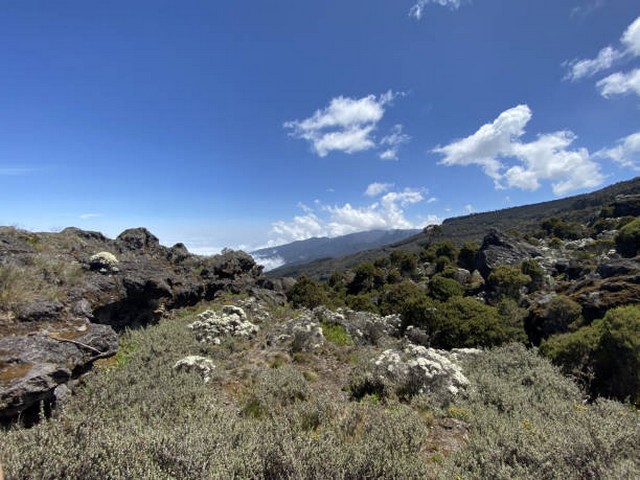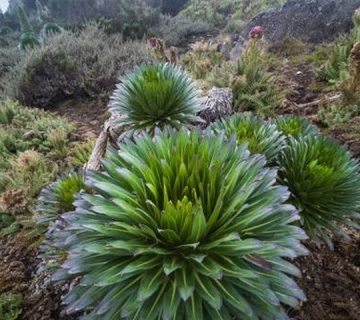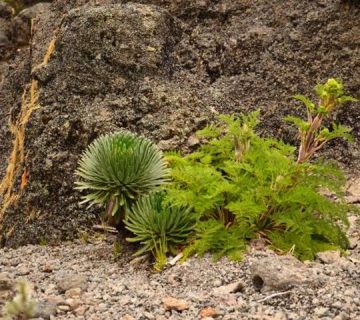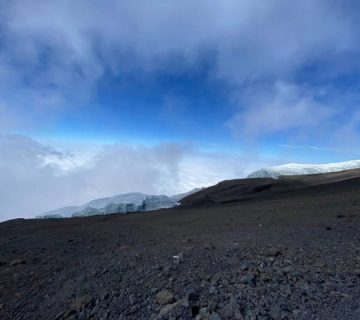The Role Of Guides In Kilimanjaro’s Cultural Storytelling
Perched majestically above the African plains, Mount Kilimanjaro is not just a mountain; it’s a mosaic of vibrant cultures, breathtaking landscapes, and stories that stretch back through time. At the Kilimanjaro Centre for Trekking and Ecotourism (KCTE), we understand that the journey to the rooftop of Africa is enriched not just by the sights but significantly by the voices of its guides. In this blog post, we explore the pivotal role our guides play in weaving the cultural tapestry of Kilimanjaro that captivates climbers from around the world.
A Journey Through Time and Culture
Kilimanjaro is more than its altitude—it’s a cultural monument, steeped in the history and traditions of the Chagga people and other indigenous groups. The mountain’s flora, fauna, and features hold various cultural significances that are often overlooked without the insights of a knowledgeable guide.
The Storytellers of the Mountain
Our guides at KCTE are more than pathfinders. They are the custodians of folklore and history, bringing to life the legends and lore of the mountain. With each step, they narrate stories, making the hike not only a physical challenge but also a spiritual and educational journey. They speak of the caves that served as shelters and the ancient rituals that promised good harvests, weaving a rich tapestry that colors the trekkers’ experience.
Preservers of Heritage
The role of our guides extends beyond storytelling. They are also passionate preservers of the mountain’s heritage. By sharing their knowledge, they ensure that the customs and traditions of the local communities are respected and sustained. This cultural exchange enriches the climbers’ understanding and appreciation of the mountain, promoting responsible and sustainable tourism.
The Educational Role of Kilimanjaro Guides
Climbing Kilimanjaro is an opportunity to learn, and our guides are the perfect teachers. Their deep understanding of the mountain’s ecosystem, coupled with their training in ecological conservation, makes them invaluable educators on the impacts of climate change and environmental protection.
Flora and Fauna Educators
As you traverse different climate zones, our guides explain the unique adaptations of plants and wildlife. From the dense rainforest at the base to the alpine desert near the summit, they highlight the symbiotic relationships that sustain these ecosystems, offering trekkers a deeper appreciation of biodiversity.
Advocates for Conservation
Kilimanjaro’s guides are on the frontline of conservation efforts. They educate trekkers on the importance of minimizing their environmental footprint, advocating for practices like carrying out all litter and respecting wildlife habitats. This not only helps preserve the mountain’s beauty but also instills a sense of environmental stewardship in all who climb.
Connecting With the Local Community
The cultural journey on Mount Kilimanjaro also involves direct interactions with the local communities. Our guides facilitate these connections, allowing trekkers to experience the warmth and hospitality of the local people.
Cultural Immersion Experiences
Whether it’s visiting a Chagga homestead or enjoying a traditional meal, our guides help arrange authentic cultural experiences that enhance the cultural richness of the Kilimanjaro trek. These interactions provide an invaluable perspective on the daily lives and customs of the mountain communities.
Bridge Between Cultures
Our guides serve as bridges, translating not only language but also cultural nuances. They help trekkers navigate cultural dos and don’ts, fostering respect and understanding between different cultures. This role is crucial in ensuring a positive, respectful interaction between trekkers and locals.
Why Book Your Climb with KCTE?
At Kilimanjaro Centre for Trekking and Ecotourism, we pride ourselves on providing a trekking experience that is respectful, informative, and transformational. Our guides are local experts committed to delivering a safe and enriching climb, ensuring that you come away with a profound connection to Kilimanjaro’s natural and cultural landscapes.
Commitment to Excellence
Choosing KCTE means opting for a team that is deeply committed to excellence. Our guides undergo rigorous training in safety, first aid, and customer service to ensure that your journey is not only enjoyable but also safe.
Support Local Economies
By booking with KCTE, you are directly supporting the local economy and contributing to the conservation efforts essential for preserving Kilimanjaro’s unique heritage and natural beauty.
A Journey to Remember
Every trek with KCTE is crafted to leave lasting memories. From the first day of your climb to the summit sunrise, our guides make each moment count, enriching your journey with cultural insights and personal anecdotes that resonate long after you’ve descended.
Conclusion: Embark on a Cultural Trek
Climbing Kilimanjaro is an adventure of a lifetime, and the role of guides in enhancing this experience cannot be overstated. They are not only leaders but also educators, storytellers, and conservation advocates, making them indispensable to the cultural storytelling of Kilimanjaro.
We invite you to book your Kilimanjaro climbing adventure with Kilimanjaro Centre for Trekking and Ecotourism (KCTE) and experience firsthand the transformative power of our guides’ storytelling. Join us in the journey to not only conquer a mountain but also to discover the rich tapestry of cultures that make Kilimanjaro truly magnificent.
Frequently Asked Questions
What qualifications do KCTE guides have?
Our guides are certified by recognized authorities, trained in wilderness first aid, and have years of experience climbing Kilimanjaro.
How do guides enhance the climbing experience?
Guides enhance the climbing experience by providing safety, educational insights into the mountain’s ecology and culture, and facilitating authentic local interactions.
Can I interact with local communities during my climb?
Yes, our guides can arrange for cultural immersion experiences that allow respectful and meaningful interactions with local communities.
Embark on your Kilimanjaro journey with us, and let the cultural stories of this majestic mountain transform your perspective of the world.




